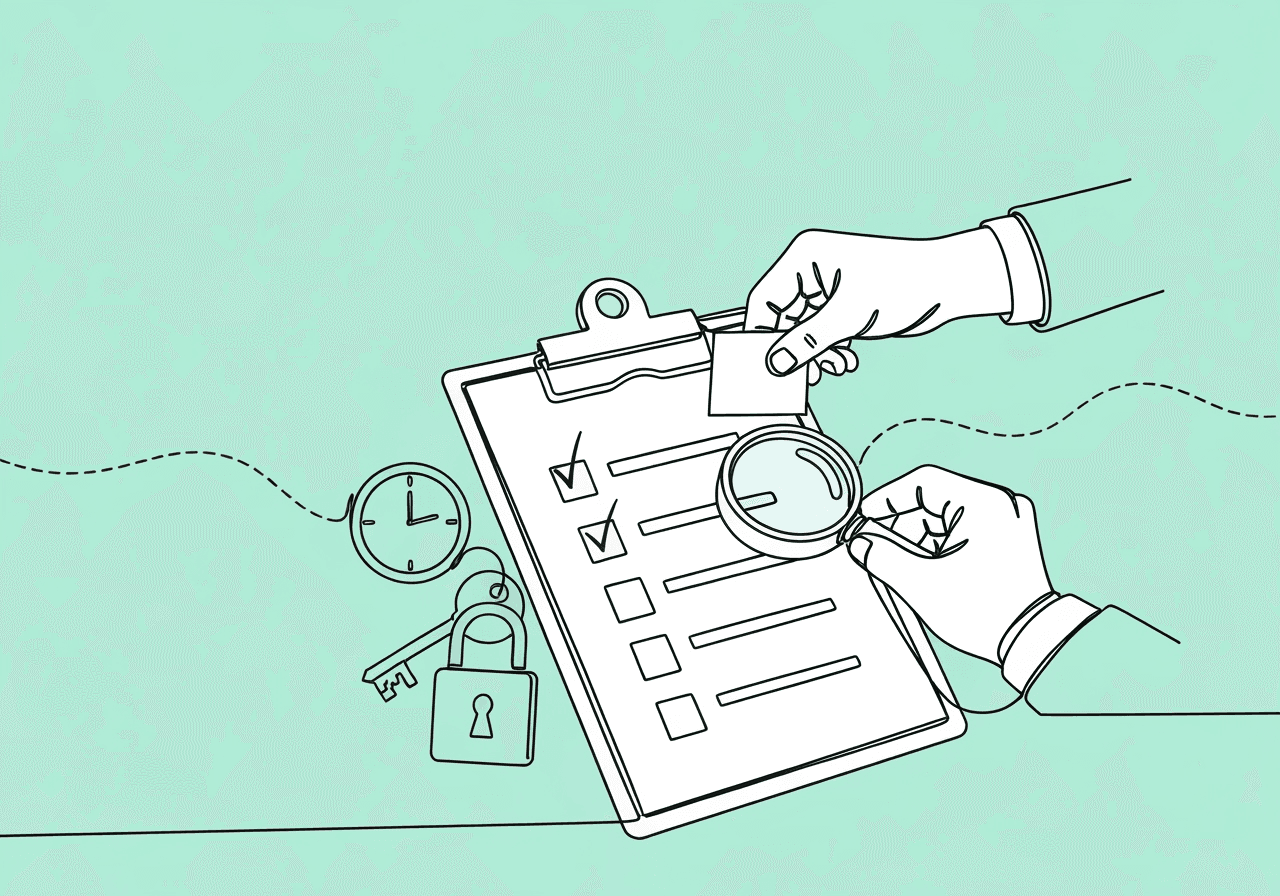BCBA SLP Documentation: Compliance Guide

Treating Autism: Collaborating with SLPs
Treating autism spectrum disorder (ASD) is changing rapidly. It's key for Board Certified Behavior Analysts (BCBAs) and Speech-Language Pathologists (SLPs) to work together for holistic client care. Yet, handling BCBA SLP documentation can be tricky. You must ensure compliance with rules like HIPAA while coordinating joint sessions.
Poor documentation risks confidentiality breaches, misaligned goals, or audit problems. This can disrupt progress for clients with communication needs. This article tackles key compliance issues in a Q&A format. It draws from established guidelines.
You'll get insights on HIPAA for data sharing, essential notes for joint sessions, consent for communication, strategies for goal overlap in areas like communication skills, and tips for a shared intervention log. These evidence-based tips help BCBAs streamline teamwork, stay audit-ready, and boost outcomes. For related ethics, check our guide on BCBA ethical documentation best practices.
Here are key takeaways for effective BCBA SLP documentation:
- Use secure tools to share data under HIPAA.
- Document joint sessions with objective facts, dates, and outcomes.
- Get written consent before sharing any client info.
- Map overlapping goals clearly to avoid gaps.
- Maintain a shared log for coordinated care.
HIPAA Requirements for BCBA SLP Data Sharing with SLPs
HIPAA sets strict rules for protecting Protected Health Information (PHI) when BCBAs and SLPs share client data. Covered entities like ABA clinics must use administrative, physical, and technical safeguards to block unauthorized access (HIPAA Compliance for Behavioral Health Practices, 2023).
In daily work, this means encrypted, secure platforms for exchanges—don't use unsecured email or drives. Take session summaries or progress reports: they count as PHI and need access controls plus audit logs. Failure to comply can lead to civil penalties (Summary of the HIPAA Privacy Rule | HHS.gov). That's why routine staff training on these rules is essential.
BCBAs should confirm all tools, like electronic health record (EHR) systems, follow HIPAA's Security Rule. This setup allows smooth BCBA SLP data sharing without privacy risks. Teams can then focus on client-centered work.
Essential Elements for BCBA SLP Documentation in Joint Sessions
Joint sessions between BCBAs and SLPs need thorough, objective notes. They capture teamwork accurately. ABAI guidelines suggest recording observable behaviors, interventions, and results in real-time for evidence-based practice (Child Communication Research and Practice: Collaborative Roles for Behavior Analysts and Speech-Language Pathologists, 2023).
Include the date, time, and who was there. Describe what happened, like modeling communication strategies with behavioral prompts. Track data, such as response rates or skill gains. Note any changes made. For example, if an SLP works on verbal requests and a BCBA adds prompts, link these to shared IEP goals.
Keep joint session documentation factual—no subjective views—to pass audits. Many ABA providers use templates with sections for both fields. This builds consistency and cuts errors. It coordinates care and shows accountability under BACB ethics standards (Ethics Code for Behavior Analysts - BACB).
Required Consent for Interprofessional Communication
Informed consent is the first step for BCBA SLP data sharing. It allows PHI release across providers. HIPAA's Privacy Rule requires specific, written authorization. This details what data goes to whom (HIPAA Compliance for Behavioral Health Practices, 2023).
In ABA-SLP work, the form should explain the purpose, like coordinating communication goals. Include options to revoke it. For kids, get parental consent. BCBAs must share only needed details with SLPs to limit exposure. ASHA stresses discussing boundaries early. This builds trust and clarifies roles (Building Working Relationships, 2020).
Review and renew consents often, especially as plans change. This prevents issues and supports ethical communication. It aligns with BACB's focus on client welfare.
Best Practices for Documenting Goal Overlap in BCBA SLP Documentation
When BCBAs and SLPs team up on areas like communication, notes must show clear alignments. This avoids duplicates or misses. A behavior-analytic view stresses integrated goals. ABA techniques can back SLP targets, like reinforcement for expressive language (A Behavior-Analytic Perspective on Interprofessional Collaboration, 2021).
Map shared objectives early in plans. For example, a BCBA might note how discrete trial training supports an SLP's communication goal. Include baseline data, progress measures, and reasons for interventions. Use specific terms, like "Client started 80% of requests independently after joint prompts," to show teamwork.
This BCBA SLP documentation keeps interventions unified. Notes should reference both fields' inputs. Progress software can chart overlaps for easy reviews. Linking goals this way improves outcomes and upholds professional standards.
Best Practices for Creating a Shared Intervention Log
A shared intervention log centralizes records for audits and coordination in BCBA-SLP teams. Follow interprofessional standards: pick HIPAA-compliant digital platforms with timestamped entries from all users (Child Communication Research and Practice: Collaborative Roles for Behavior Analysts and Speech-Language Pathologists, 2023).
Add fields for session type, interventions, results, and next steps. After a joint session, both log observations—SLP on articulation, BCBA on behaviors—with dates and digital signatures.
Do bi-weekly reviews to match entries and fix mismatches. This boosts transparency. It streamlines joint session documentation and creates a solid audit trail.
Frequently Asked Questions
How can BCBAs and SLPs ensure HIPAA compliance during joint sessions?
Use secure, encrypted tools for real-time notes in joint sessions. Limit PHI to authorized team members. HIPAA guidelines call for explicit consent on sharing details and regular security checks (HIPAA Compliance for Behavioral Health Practices, 2023). De-identify data when possible. Train staff on breach responses to safeguard privacy.
What are the best practices for documenting shared goals in BCBA-SLP collaboration?
Create aligned plans that list overlapping objectives, like communication reinforcement. Include baselines and progress trackers. ABAI suggests joint meetings to map these. Notes should show inputs from both sides (Child Communication Research and Practice: Collaborative Roles for Behavior Analysts and Speech-Language Pathologists, 2023). Use templates and review quarterly.
How can regular feedback sessions between BCBAs and SLPs improve client outcomes?
Feedback sessions let teams review data, tweak interventions, and sort scope issues. This leads to integrated care. ASHA pushes open talks on client responses to joint strategies. It aids communication growth (Building Working Relationships, 2020). Hold them bi-weekly to measure gains and refine BCBA SLP documentation.
What strategies can be used to handle conflicts between BCBAs and SLPs?
Tackle conflicts with structured talks centered on clients. Clarify roles early. Standards recommend mediation through shared goals or outside help if needed (A Behavior-Analytic Perspective on Interprofessional Collaboration, 2021). Log resolutions to avoid repeats and keep ethics strong.
How can digital tools streamline BCBA-SLP collaboration while maintaining HIPAA compliance?
Choose HIPAA-compliant EHRs or apps with role-based access, real-time edits, and encryption for logs. They enable secure BCBA SLP data sharing without manual handoffs, per HHS tips (HIPAA Compliance for Behavioral Health Practices, 2023). Test options with compliance reviews for smooth use.
What role do parents play in BCBA-SLP documentation and consent processes?
Parents give informed consent for data sharing and join goal-setting to match family needs. BACB ethics demand noting parental input in sessions for openness (Child Communication Research and Practice: Collaborative Roles for Behavior Analysts and Speech-Language Pathologists, 2023). Involve them in reviews to confirm progress and update plans together.
Strong BCBA SLP documentation connects disciplines for HIPAA-safe, coordinated care. It puts client progress first. Focus on consent, objective notes, goal links, and shared logs to cut risks and strengthen impacts. Guidelines from ABAI, ASHA, and HIPAA back this.
Start with a team audit of your tools. Update consents for ongoing work. Plan initial joint sessions. These actions build audit strength and ethical quality. They support better results in ABA-SLP teams. For AI note tools that fit, try Praxis Notes' HIPAA-secure options.
Popular in Compliance & HIPAA
- 1
ABA Documentation Checklist: RBT Compliance Guide 2025
3999 min read - 2
BCBA Procedural Fidelity Checklist: Essential H-6 Guide
3566 min read - 3
BCBA Ethical Documentation Best Practices
2916 min read - 4
RBT Renewal Competency Documentation Guide for BCBAs
2576 min read - 5
RBT Supervision Log Audit Checklist for BCBAs
2136 min read
Popular in Compliance & HIPAA
- 1
ABA Documentation Checklist: RBT Compliance Guide 2025
3999 min read - 2
BCBA Procedural Fidelity Checklist: Essential H-6 Guide
3566 min read - 3
BCBA Ethical Documentation Best Practices
2916 min read - 4
RBT Renewal Competency Documentation Guide for BCBAs
2576 min read - 5
RBT Supervision Log Audit Checklist for BCBAs
2136 min read
Related Resources
Explore more helpful content on similar topics

HIPAA Compliance ABA Documentation Guide for Clinics
Discover HIPAA compliance essentials for ABA documentation in clinics. Learn secure note practices, audit-proof recordkeeping standards, and effective HIPAA staff training tips to protect sensitive client data. Start safeguarding today!

ABA Documentation Compliance Audit: BCBA Checklist
Master ABA documentation compliance audits with this essential BCBA checklist. Learn to verify session notes, data integrity, HIPAA protocols, and clinic record retention for seamless compliance and risk reduction.

Essential BCBA Client File Review Checklist for Compliance
Discover the essential BCBA client file review checklist for seamless ABA compliance. Cover administrative, clinical documentation, data integrity, supervision, and ethical standards to ace BCBA chart audits. Start implementing today!